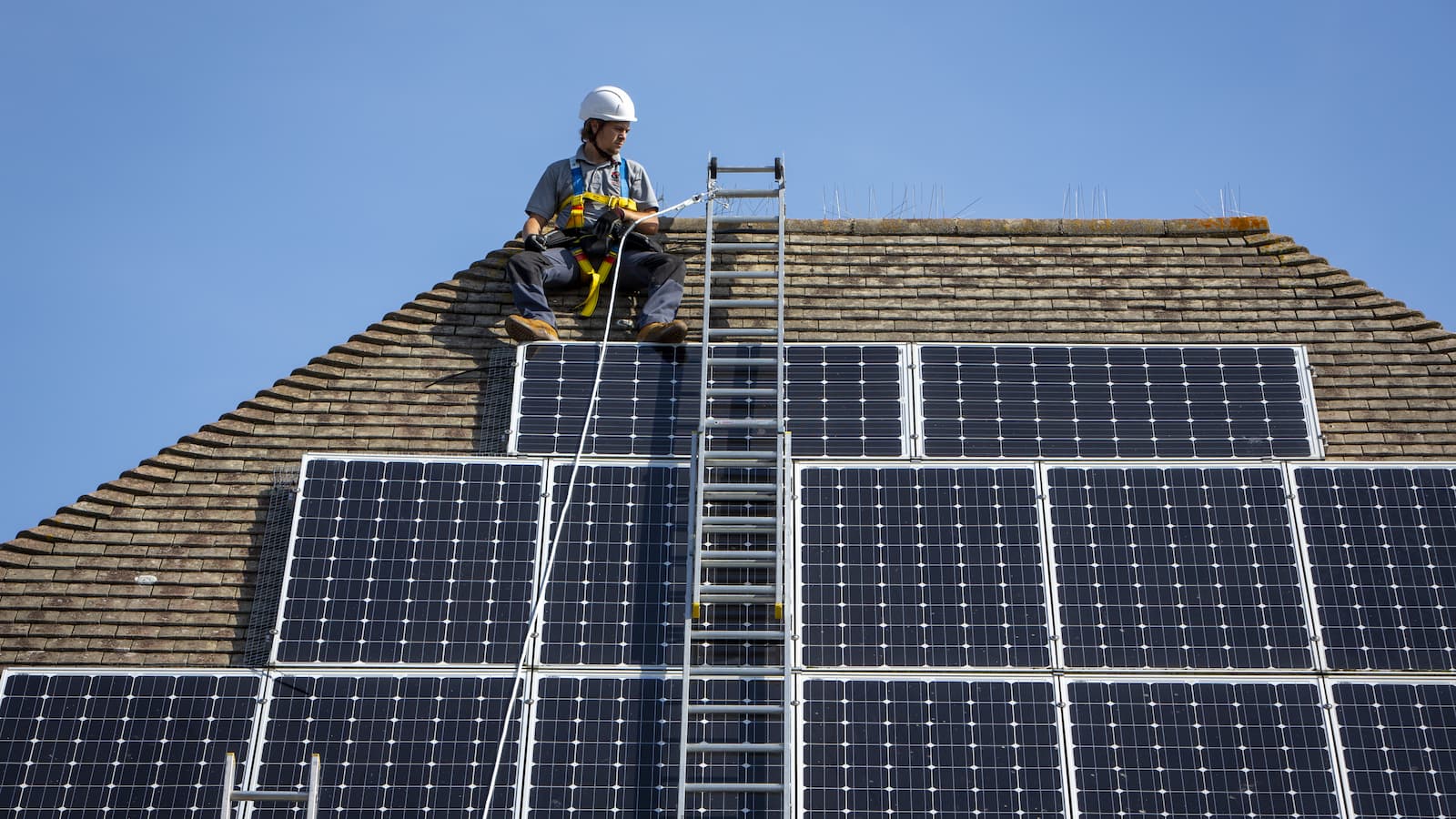Solar panels are marketed as a safe, green solution, but what if the very panels on your roof could spark a fire?
It’s a risk many homeowners have never considered, yet recent cases prove that although it is rare it is also very much possible.
So, how can solar panels catch fire and what’s behind these incidents? The answers reveal hidden dangers in wiring, components and installation that every household should understand.
Can solar panels catch fire?
Yes, but often it isn’t the panels themselves.
Phil Strickland, Technical Operations Director at 21 Degrees, says: “It wouldn’t normally be the visible glass panels where it starts. Any fire is more likely caused by the DC current in cables or connectors, not the panels themselves.”
He further states, “Even when a system is switched off, sunlight can still generate DC current,” he explains. “If connections are poor or components damaged, that current can arc, overheat and cause a fire. Optimisers convert DC to AC at the panel itself, which helps reduce the chance of fires.”
What regulations are there to prevent solar panel fires?
Regulations and industry standards play a key role in keeping solar installations safe. These regulations aim to cover every part of a solar PV system.
Ian Rippin, CEO of the Microgeneration Certification Scheme (MCS), stresses the importance of certified systems: “Only invest in certified systems made of certified products, installed by a certified contractor.”
The updated RC62 code of practice, produced with the Fire Protection Association and Solar Energy UK, sets clear standards for design, installation and maintenance to reduce fire risk.
In addition, responding to growing safety concerns, UK manufacturer Solfit recently launched the JT 425Wp in-roof solar panel, built to meet the strictest fire-safety and building regulations. Featuring double-glass laminate and an interlocking metal frame, the panel is installer-friendly and offers 425 watts of output.
Ewen Estill, Solfit’s owner, said: “With UK regulations becoming more rigorous, this panel provides peace of mind without compromising on performance.” The launch follows high-profile fires in Surrey and Bristol, highlighting why choosing certified products and professional installation is essential.
Examples of solar panel fires
There have been several UK incidents showing how even small failures can lead to serious fires:
- In February 2024, a warehouse in Peterborough was devastated by a fire traced to an “electrical fault” in its rooftop solar setup.
- In August 2024, a residential block in Lewisham caught fire; firefighters used special coatings (PVStop) to safely manage the solar arrays.
- In May 2025, housing association properties in Surrey’s Strawberry Fields estate were badly damaged after a blaze involving rooftop solar.
- In July 2025, multiple schools in Northumberland disconnected solar panels following a community centre fire, as a precaution while investigations into safety risk were carried out.
Fire authorities emphasise that while each of these is serious, the total number of solar panel fires remains very small relative to the number of installations, but they underscore the importance of using certified products, good installers, and regular checks.
While solar panels are generally safe, recent UK incidents show that faults, poor installation, or low-quality components can pose a real risk.
Homeowners should remain vigilant, ensure their systems are properly installed, regularly maintained, and meet current safety standards.
Taking these steps can help protect your home and make sure your solar investment remains a safe, sustainable source of energy.
View the original article and our Inspiration here


Leave a Reply